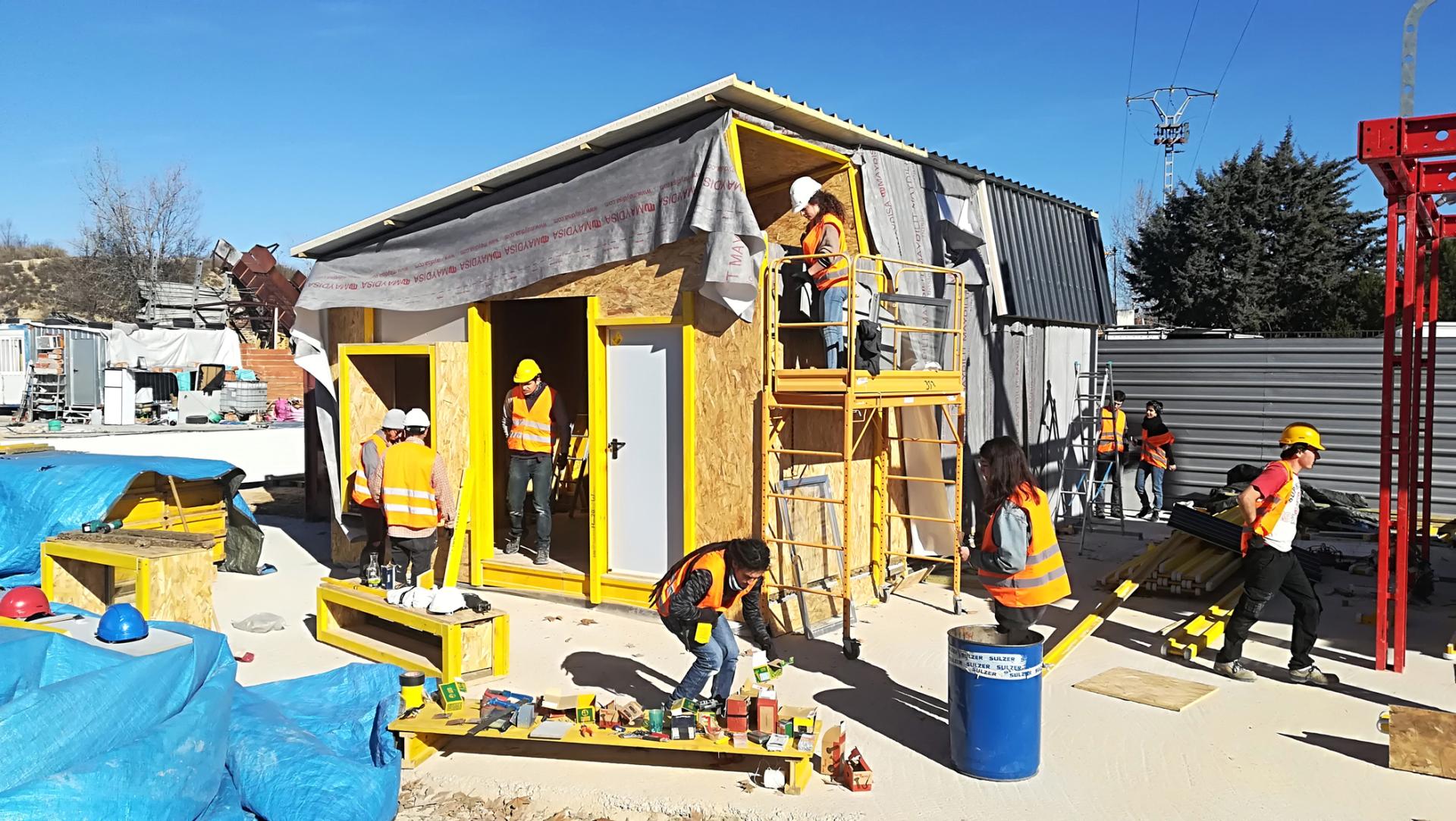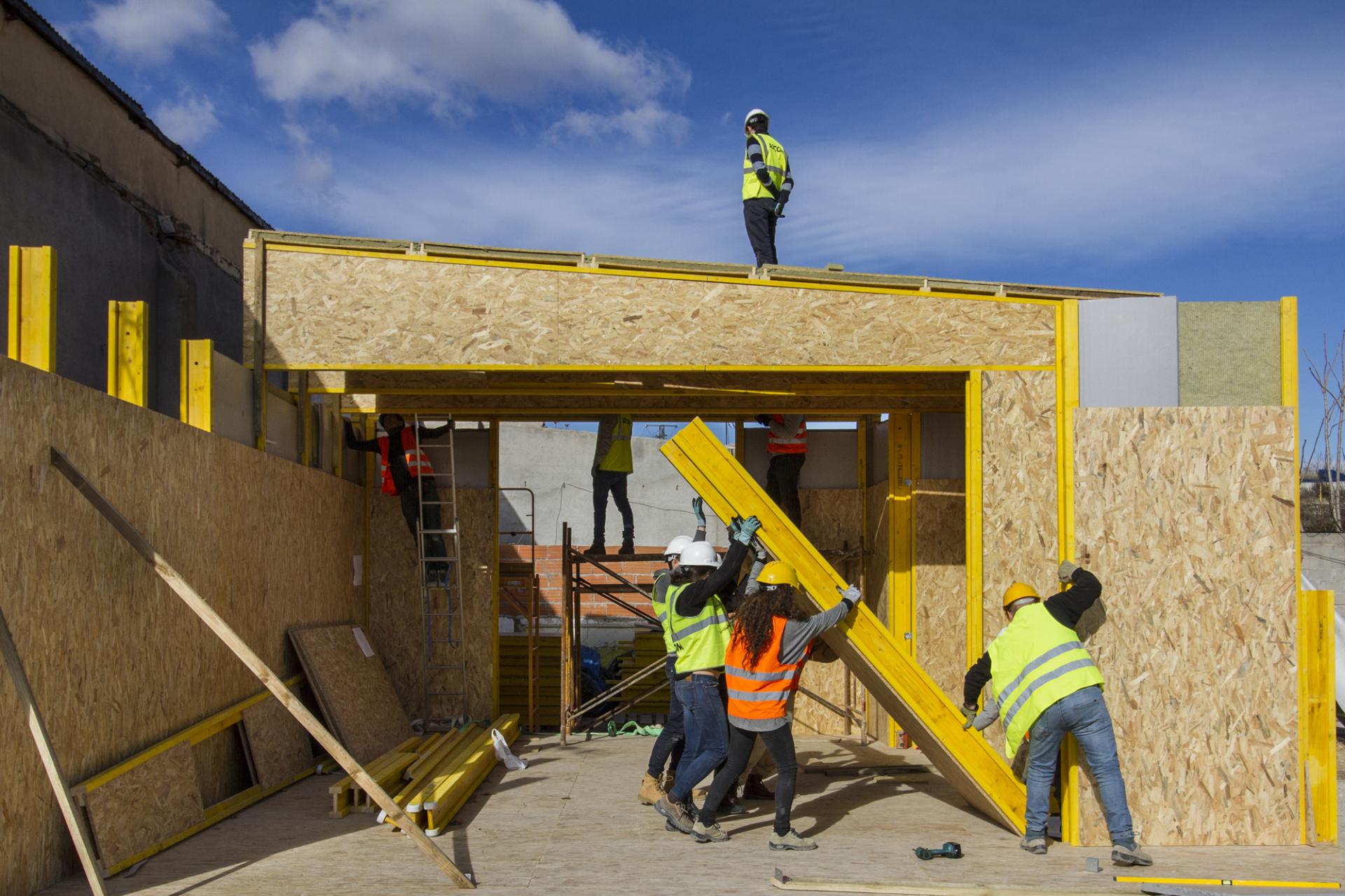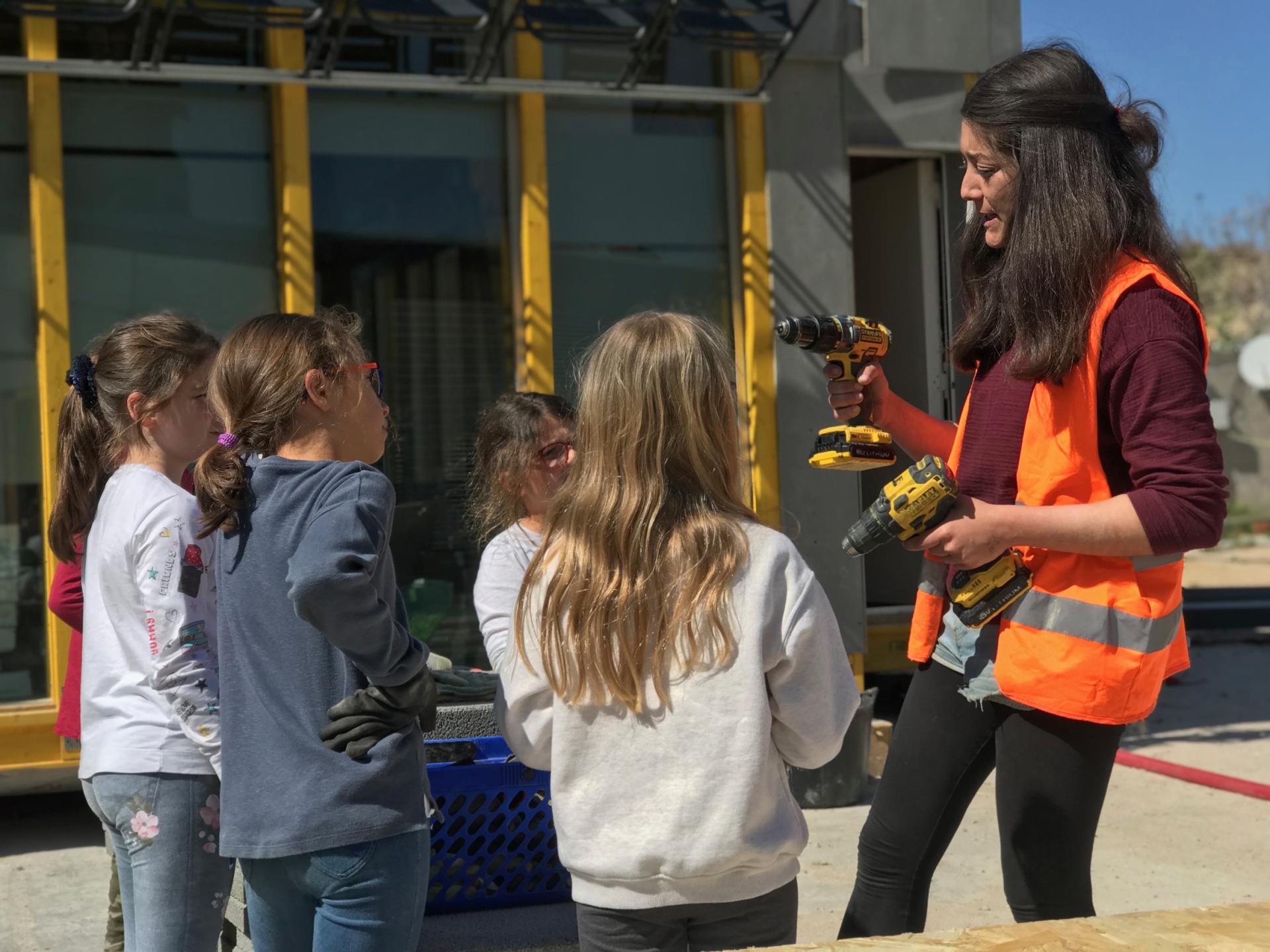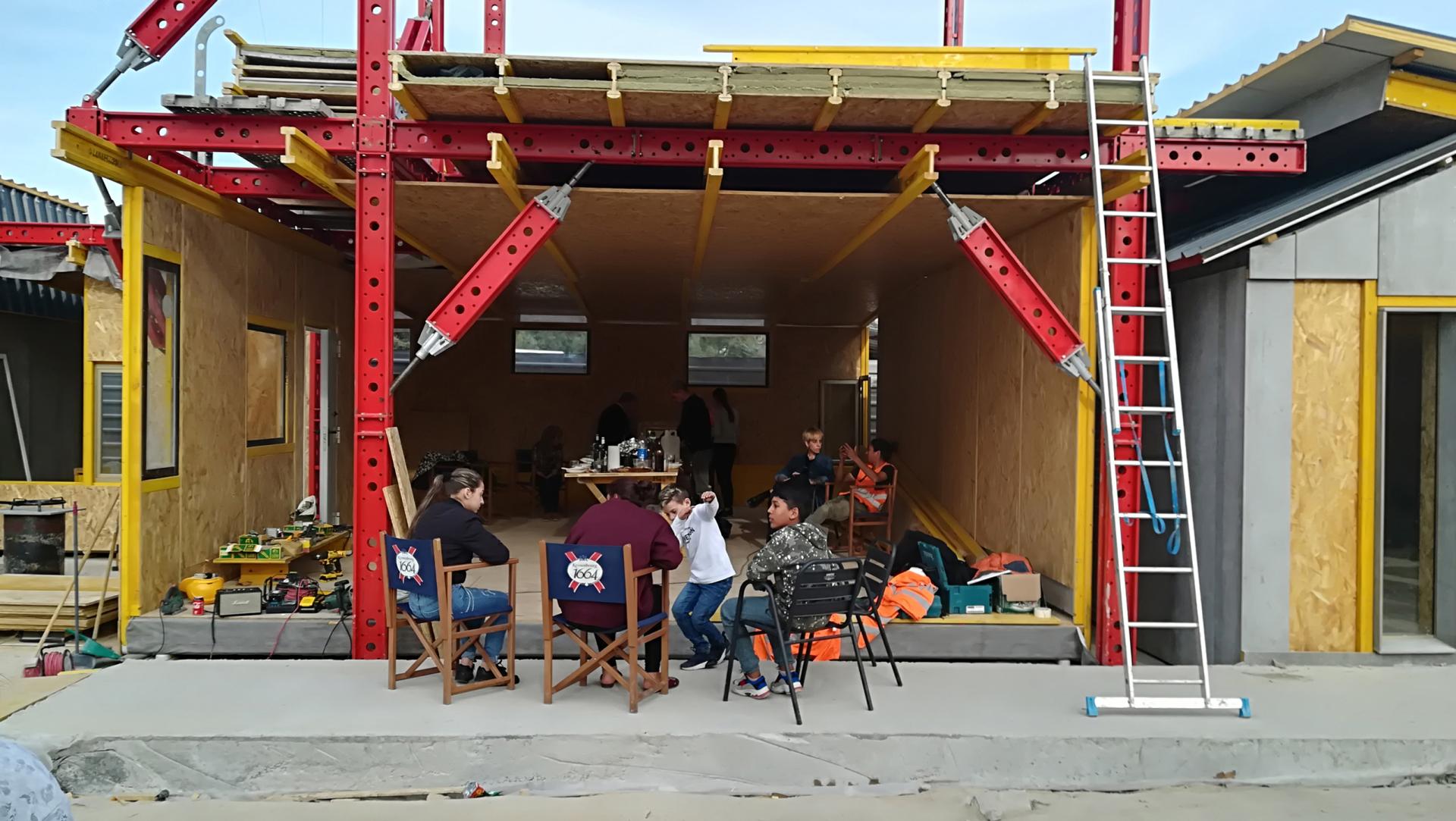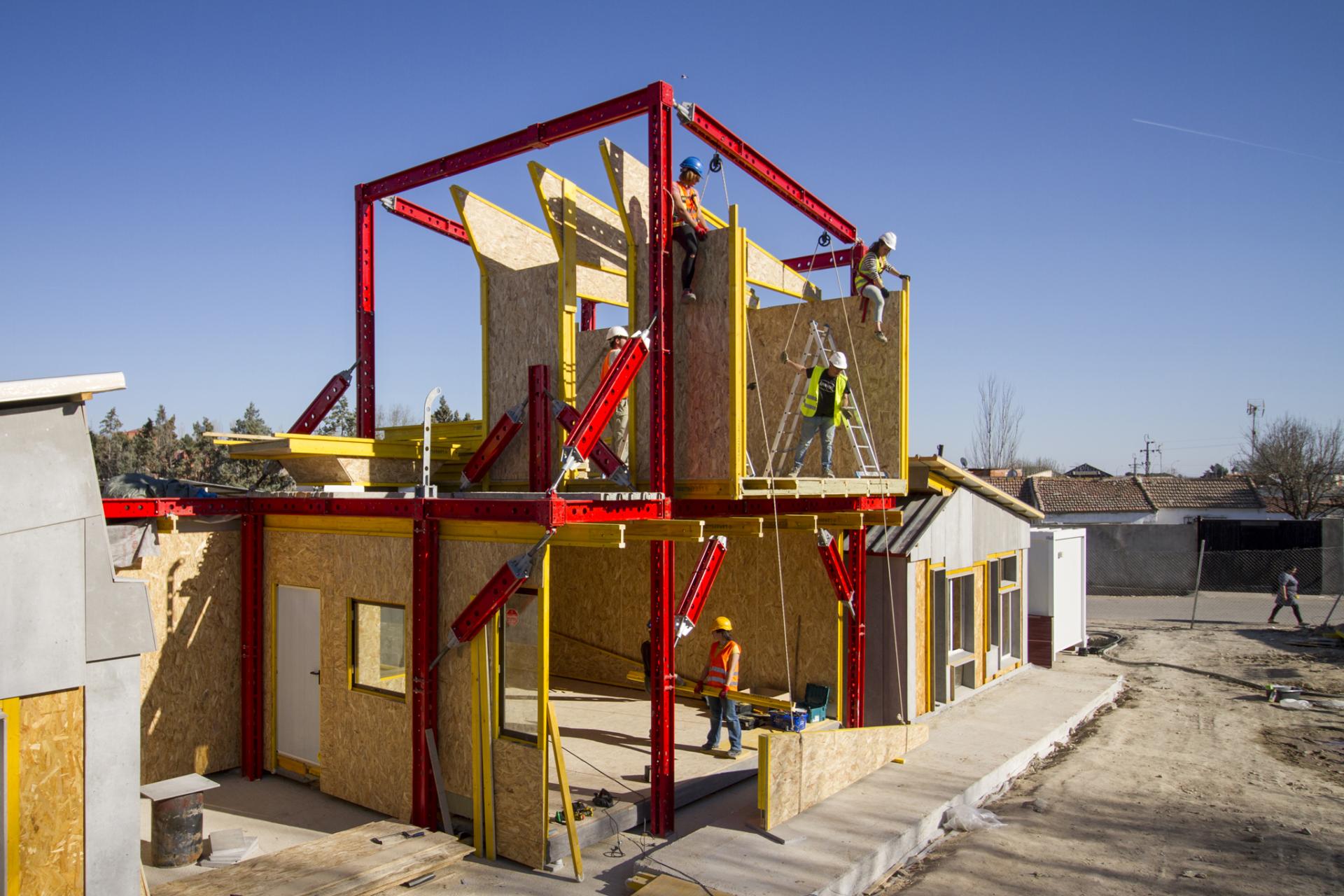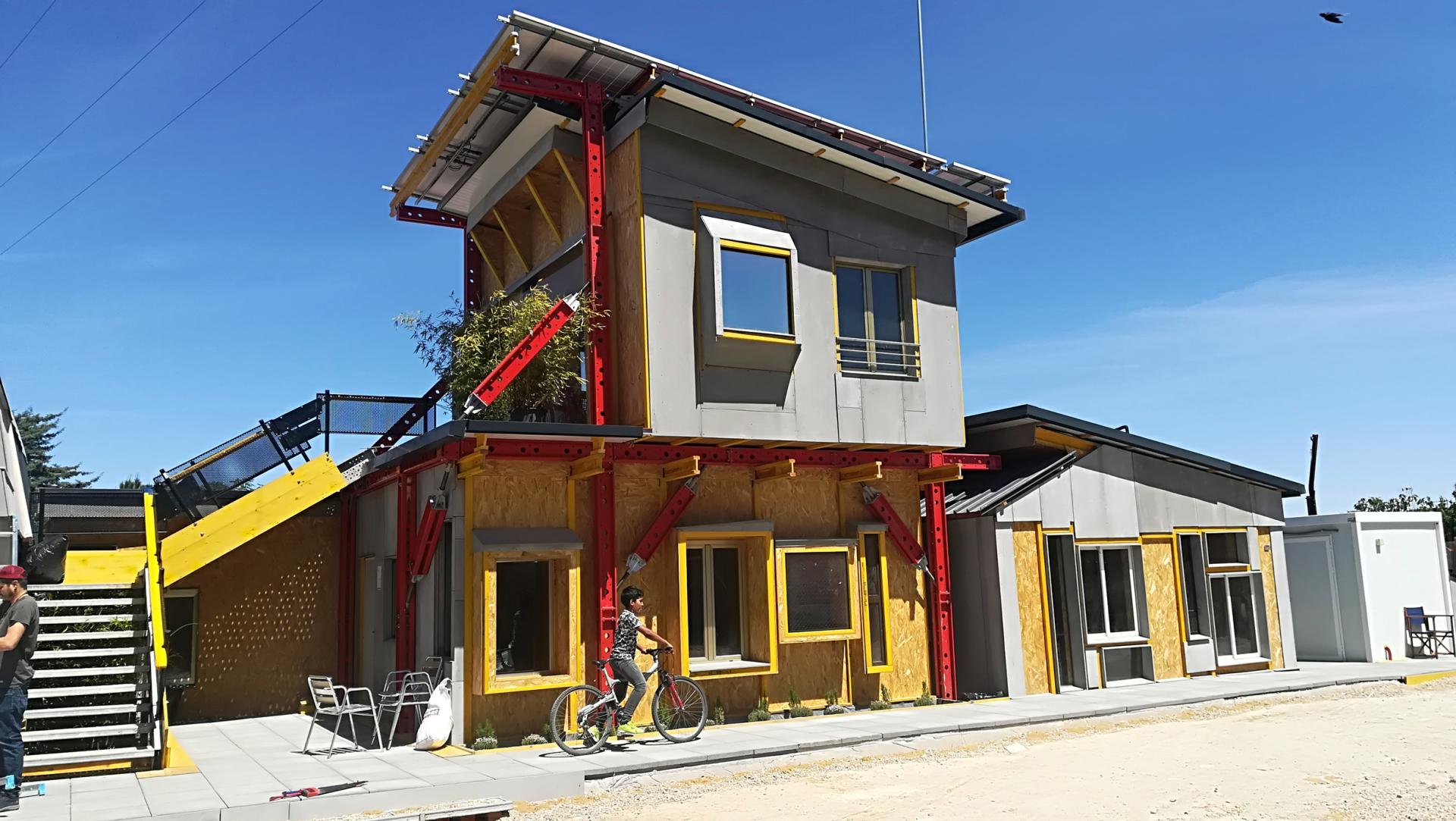Unauthorised Entry Permitted
Basic information
Project Title
Full project title
Category
Project Description
“It’s not about getting people from one place and putting them in another, but about social support.” Nacho Murgui
Here you are an experimental project of public and social co-management including the participation of more than 1200 volunteers in a participatory construction process, among them some 600 minors, 17 social entities, 1 penitentiary centre, 3 universities and many other individuals. In just 5 months, a Social and Community Centre was built in sector 5 of the Cañada Real Settlement.
Project Region
EU Programme or fund
Description of the project
Summary
The entrance to the government of the political party Ahora Madrid, boosted the use of public funds to promote the construction of infrastructures to bring public services and processes of mediation and conviviality closer to communities at risk of exclusion. One clear example is to be found in the commitment provided in the Regional Pact for the Cañada Real in relation to the promotion of intercultural relations. Among one of the goals of such agreement was the construction of the Social and Community Centre. Recetas Urbanas [Urban Recipes], the architecture studio founded by architect Santiago Cirugeda, committed to participative self-construction as a means to promote social integration and mediate within various complex realities, and guarantee a better use of public goods.
We present to the tender, with the experience and enthusiasm of involving and caring for the largest number of direct or indirect users. Although the program required five spaces: 3 30 sq.m workshops, 1 45 sq.m community space and 90 sq.m of offices and self-sufficient bathrooms, 25% more were built with the same budget (195,780 €).
The proposal focused on self-construction as a means to promote participation while tackling and operating on various complex social realities. On that matter, and to promote the de-stigmatization of the slum by creating support networks among other points of the city of Madrid, some parts of the centre were built outside Cañada Real but assembled jointly on the spot where the Centre was located. Thereby, more than 1,200 people, including some 600 minors, 17 social entities, 1 penitentiary centre, 3 universities and many other volunteers have participated in this construction. It is the first experiment with a new public-social cooperation regulation where we have involved more people and entities than planned with execution times of only 5 months.
Key objectives for sustainability
Central to the success of this project has been the reuse of materials and formats for citizen participation in the decision-making process. Thus, the main result of this place is the realization of architectural works under a self-construction regime, approved according to the Technical Building Code.
The resulting building is self-sufficient so it can produce its own energy with the only need of natural external sources. This feature has been even more valued during the 2020-21 winter crisis when an intentional power outage of the supply company, left thousands of houses in this Madrid neighbourhood without electricity.
The work of the Recetas Urbanas team is characterized by its continuous experimentation using the city as a laboratory and a space for conflict resolution. Nonconformity, continuous research in practice and achievements have advanced knowledge and practice in architecture, which has led us to receive several prestigious international awards such as the Global Award for Sustainable Architecture. The impact of this action is also developed within the framework of several European Sustainable Development Goals and in a very specific way to the Mission area: Adaptation to Climate Change Including Societal Transformation of Horizon Europe.
Like the goals set by the EU's for a transition to a circular economy, we have brought 80,000 euros in construction materials from ArtBasel for the construction of the centre in Cañada Real Galiana. The use of reused material is a basic source for the sustainability and effectiveness of Recetas Urbanas’ practice. In that sense, it cannot be ignored how due to our long trajectory and experience we have nowadays constituted a solid network that tactically moves material from one side to the other.
Self-built architectural solutions develop public-private cooperation, equality, development of culture, citizen participation and education, expanding the concept of sustainability to a socio-environmental sphere.
Key objectives for aesthetics and quality
The Centre consists of three multipurpose rooms, three offices and an auditorium. A particularity of the construction is that it is removable and mobile, since it cannot be legally built in the Cañada, and that, in addition, a relocation process because the social situations that occur in the Cañada are very diverse and that diversity of situations must be given a diversity of solutions.
The different modules that make up the equipment has been carried out in different workshops and then transferred to the field: one was manufactured by the prison prisoners of Soto del Real, another at the nearby Hipatia FUTHEM school, another in the Superior School of Design in Madrid, another in the Iroko workshop for youth at risk of social exclusion and another in Naves Matadero.
In June 2018, we built a prototype of a house inside for the International Centre for Living Arts-Naves Matadero, intended to invite creators and spectators to live and experience it for a month. Once the program in the cultural space was finished, the elements of the house were dismantled and moved to the Cañada Real to form the first building of the Socio-Community Centre: a 48sqm multifunctional work space.
Another line in which we are working is mixing socio-cultural events and self-building activities so they take place simultaneously as in former projects by Recetas Urbanas. As the construction of a space finish, we start using it by setting an agenda of socio-cultural activities while we keep self-building other spaces.
From the first design to the daily building process and its final execution, what makes it remarkable is the difference in its conception and development. Some things stand out; the way that the materials are reused, the fact that the design is adapted to work as something that is both aesthetical and functional. The project design is not closed. All depends on the material available, and the ways that those can be integrated. The project is in constant evolution.
Key objectives for inclusion
The absence of the infrastructure and equipment, the lack of green areas, the need of recreational and meeting spaces, and the great environment deterioration are some of the problems mentioned repeatedly, both by the neighbours as by the professionals working in Cañada Real Galiana. Its current situation derives from a context of constant institutional abandonment and a systematic vulnerability of basic rights.
More than 1,200 volunteers from 13 different nationalities have collaborated in this construction, including neighbours, women of the Fundación Secretariado Gitano, women of a Latin American network victims of gender violence, prisoners, volunteers of associations and students who have arrived from schools and institutes, or national and international universities. The idea is that this experience serves to publicize the reality of the Cañada Real and to weave social bonds.
Within Recetas Urbanas’ usual forms of operating, identification relates to the diagnose of the diversity existent within formally and informally constituted spaces. Being attentive and identifying the needs of a concrete community is crucial when caring for their participation.
The methodology begins with approaching the educational centres of the environment that affect three municipalities, where the vast majority of the minor residents of Cañada Real are located. The families of sector 5, where the project is located, were visited. We invite social entities, neighbourhood associations and new entities to participate. We decided to collaborate with the neighbours who are in the Soto del Real prison, where, as in other spaces, slabs, walls, trusses, roof panels and window boxes are prefabricated, which will then be assembled in the official construction site. For all these reasons, the poster for the work says: " UNAUTHORISED ENTRY TO THIS SITE IS STRICTLY PERMITTED."
Results in relation to category
Cañada Real houses nearly 8,000 inhabitants in around 16 kilometres of the cattle route. Before this project and because of the configuration of the irregular buildings, there was no square or public place where meet and share. On such a long street, it is difficult for information to flow and to have spaces to gather. This Centre, which also has indoors and outdoors areas, has this function, being a place where you can go to spend time, getting involved in an activity or not. It definitely provides a place to gather for the whole marginalized community of Cañada.
“All sectors of Cañada Real had a lack of public spaces. The spaces for social activities or for the use of the neighbours were private, -neighbourhood associations-, but there was no space where everyone could go shared by the whole Cañada Real.” Susana Camacho, Social Worker for Fundación Secretariado Gitano.
The initiative to build and move forward this social and community space forward arises directly from the residents of Cañada Real. They didn’t not demand a space to consume social and community activities, but rather one where they could generate those activities.
Reinventing the work construction sites opening it for participation processes, it’s another way to create, from the very first moment, a place to meet and share. “It’s architecture but above all human condition: if an object is given to a community that has not been asked, who has not participated or collaborated… then it’s worth nothing!” Santi Cirugeda, Architect.
In short, it’s about promoting new spaces for the development of the common involving non-profit entities and collectives led by citizens with a public-social cooperation.
“The longer it lasts, the better, because this is for the benefit of the children, for all of us, for sharing information. This is very good for the neighbourhood; it gives us a lot of strength.” José Luis Fernández, neighbour Cañada Real.
How Citizens benefit
It is about searching new protocols to put architecture at the service of people and find ways to exercise in a responsible and committed way.
The construction of the Social and Community Centre was carried out through open workshops that were held weekly on the construction site. Volunteers can get involved in the construction and participate, following the safety regulations and the instructions given by the responsible technicians. Other workshops were moreover developed in parallel at various spaces in Madrid for the construction of precast elements, which are later moved and assembled in La Cañada.
As well as the European Union recognizes and respects the right of older people to have a dignified and independent life and to participate in social and cultural life, we made possible that people, including youth in risk of exclusion, felt theirs the project.
With the same objectives, during the month of February 2018, a prefabrication workshop was held in the jail Soto del Real in which five inmates, residents of La Cañada Real, participated. All the precast elements were later moved to Cañada, and they were assembled to form the Soto del Real space.
“When you enter the prison for the first time what happens is that you feel outside the world and this project makes you feel inside again. It is very important to try to break walls. And from the very first moment that we told the inmates about the project there was a lot of emotion, because they think they are going to do something for their people, for the people who they are away, for their children, for their women.” Lourdes Gil, Sociologist and Deputy Assistant Director for Penitentiary Management.
Furthermore, our methodologies and constant engagement in bottom-up struggles have cultivated a strong affective, emotional and caring network that drives a huge range of collectives, activists and civil society at large.
Innovative character
Public administration had to do it in an innovative way, and the neighbours were the protagonists of the institutions. Almost all technical specifications of public tenders include gender equality, economic efficiency and technical effectiveness in order to be able to submit a project. Recetas Urbanas proposed a project in which it integrated social clauses, betting on self-construction as a means to promote participation, and thus facing the various social realities present in the territory and with no existent or previous legal contractual examples that could be used for a project of these characteristics
Self-construction strategies for the construction of public facilities are almost non-existent, giving the exclusivity in some housing plans that some Spanish autonomous communities and municipalities have proposed. These trends have also spread in several European countries where, however, there are already supports. The lower cost of work in these models is a fundamental factor, but not the only one of their growing success. These models add a social value in their implementation, promoting training and the consolidation of common responsibilities, which also usually guarantees good care of the buildings and their maintenance, both for new construction and for rehabilitation.
Today, we need to do more diversity of spaces, faster-running buildings or reversible buildings and to use new or second-hand efficient materials.
We do believe that the main barriers or discouragements for architects to adopt a different paradigm could be how to finance projects, but in reality, it is more about accepting the risk of being critical. Of course, it is also very difficult to involve and include more options or people in the progress, it is about making decisions and assuming responsibilities and the technicians of the administrations that authorize the projects are not prepared for it either.

